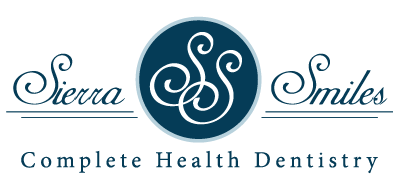Would you like a little help understanding the ins and outs of your dental insurance/dental care payment options? Decoding covered treatments, premiums and copays can be time-consuming and confusing, especially when it comes to figuring out how much you have to pay out of pocket to get the care you need. We’ve created a quick reference guide that breaks down the basics of dental coverage to help you make sense of your options.
1. Dental Insurance
Dental insurance is the most common way for patients to manage the cost of their oral healthcare. Whether the insurance is offered as part of a company benefits package, or you have purchased a private plan, it is a handy way to reduce (but likely not eliminate) the costs of preventative treatment or dental procedures. While policies and procedures will vary from provider to provider, the basics of insurance are as follows:
-
-
Monthly payment:
You or your employer pay a monthly premium to the dental insurance provider. Some employers will pay the full premium. Most will deduct the portion you agreed to when you selected your insurance plan.
-
In-network office:
You find a dentist who accepts your insurance. (Some policies may allow for out-of-network providers, usually at a higher cost to you. It is very important that you confirm this is allowed before you attend your first appointment.)
-
New patient visit:
You make your first visit to the dentist approved by your insurance (or allowed outside of the network). There, the dental team will clean, examine, and x-ray your teeth so they can create a baseline for measuring progress and suggest a treatment plan.
-
Pre-authorization:
While preventative care like routine cleanings are typically covered as part of your insurance policy, you may need to seek pre-approval from the insurance company for additional treatments. (Some treatments, like fillings, do not require pre-approval.) If you do not get pre-authorization for some procedures, you may be held responsible for paying the entire cost.
-
When choosing a plan, the cheapest option is not always the best option. Take care to consider your needs and weigh them against the benefits of each policy offering. If you have a child in need of braces, for example, you will want the best orthodontic benefits available. If you know you will need a great deal of care to reverse gum disease or fix multiple damaged teeth, a plan with excellent restorative care benefits might be better for you.
2. Smile Advantage
At Sierra Smiles, we understand that not all of our patients have access to health insurance that will cover the necessities of dental care. That’s why we provide patients with an option that helps them pay for important services. Smile Advantage is an annual dental savings program that gives patients access to critical preventative care, such as twice-yearly cleanings and annual x-rays. Here’s how the Smile Advantage option works:
Patients select from one of our three available plans. (We even offer one for children, so your kids can get the care they need to have a healthy start with their dental hygiene!) The adult plans are offered in two tiers. One covers the basics and the other offers additional treatment options and a larger discount on services outside of the plan coverage. The cost for both plans is lower than paying out of pocket for these services and often comparable to or lower than typical insurance premiums.
Why have we developed this option for our patients? Because we care about your health — and saving you money. Routine, consistent dental care is one of the easiest ways to prevent costly dental procedures.
That’s why all Smile Advantage plans include:
- Routine Hygiene Wellness Visits & Exams
- Diagnostic X-Rays
- Discount on Treatment
- Discount on Cosmetics
- No Pre-Existing Condition Limits
- No Greedy Insurance Companies
- No Deductibles
- No Waiting Periods
If dental insurance or credit are not options for your care, consider the benefits of a Smile Advantage plan for you and your loved ones.
3. Care Credit
Some patients do not have dental insurance, nor do they wish to commit to a plan like Smile Advantage. Others might not have the money to pay their share of the insurance co-pay for more expensive procedures. For these patients, a line of credit might be the best option for covering the cost of treatment. At Sierra Smiles, we offer our patients the option to apply for a Care Credit credit card to cover additional expenses.
Because Care Credit is restricted to the purchase of healthcare related goods and services, it often carries lower interest rates than a regular credit card. In fact, Care Credit often offers promotions like 0% interest for a set period of time, providing patients with the opportunity to avoid interest charges altogether (if paid in full before the promotional period ends).
Credit does come with risks and not all patients may be able to qualify for a Care Credit card. You may want to apply before scheduling expensive procedures to ensure you have payment at time of service.
Call Sierra Smiles Today to Discuss Your Dental Insurance or Payment Options
If you would like to know if Sierra Smiles works with your dental insurance, or if you’d like to know more about Smile Advantage and Care Credit, our friendly front office team will be happy to help you! Give us a call today to discuss your needs, look over your policy, or set up an appointment for treatment. You can also sign up for our easy, cost-effective Smile Advantage plan by filling out the form included on our website. We look forward to becoming your new family dentist in Nevada!
